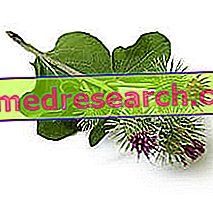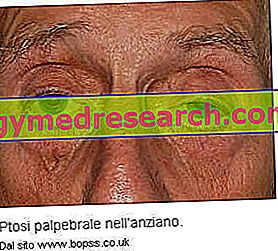
Scientific name
Arctium lappa L.Family
Asteraceae (Compositae)Origin
Burdock is a very common weed.Used Parts
The roots are mainly used, harvested in the autumn of the first year of vegetation or in the spring of the second year, but also the leaves, the rhizome, the seeds and the fruits.
Chemical constituents
- Essential oil;
- Lignani, among which we find the arctiina;
- Sesquiterpene lactones, among which we find arctiopicrin;
- Caffeic acid derivatives;
- Polysaccharides;
- triterpenes;
- Phytosterols;
- Tannins;
- Polyester and polyene;
- Inulin;
- Arctic acid;
- Lappatina;
- Mineral salts;
- Vitamins;
- Polyphenols.
Burdock in Herbalist: Properties of Burdock
Burdock has always been known for its diuretic, diaphoretic, purifying, detoxifying, choleretic, hypoglycemic (inulin), eudermic, antiacneic, antiseborroic, antiseptic, anti-inflammatory, healing and antioxidant properties.
Biological activity
As mentioned, the burdock is attributed a wide variety of properties, although its use has not yet obtained official approval for any type of therapeutic indication.
Among the many activities ascribed to the plant, the most prominent are antibacterial, antioxidant, anti-inflammatory and hepatoprotective.
The antiseptic properties of burdock have been confirmed by in vitro studies, which have shown that ethanol extracts - obtained from the aerial parts of the plant - are effective against microorganisms such as Bacillus subtilis and Salmonella typhi .
However, these extracts were ineffective against Escherichia coli and against bacteria of the genera Staphylococcus, Streptococcus, Klebsiella, Proteus and Pseudomonas .
Another study - still conducted in vitro - has instead shown that the extract obtained from the achen of the burdock is able to exert an anti-inflammatory activity through a mechanism that foresees the inhibition of the platelet activation factor (PAF), ie through the inhibition of one of the chemical mediators involved in inflammatory responses. This action appears to be carried out by the lignans contained in the extract, in particular by the arctiina.
Furthermore, the lignans contained in the burdock also showed an interesting in vitro antitumor activity, exercised against cell lines belonging to different types of human tumors.
From yet another study, always conducted in vitro, it emerged that the burdock also has a potential antimutagenic activity.
The hot aqueous extract obtained from the roots of burdock, on the other hand, has been shown to possess an antioxidant activity, expressed through a mechanism of action similar to that of the enzyme superoxide dismutase. Moreover, the antioxidant activity of which the burdock is equipped, allows the plant itself to exert a hepatoprotective action.
Finally, from other in vitro studies, it was found that the extract of the burdock achenes also has an interesting antiretroviral activity and has been shown to be particularly effective against the human immunodeficiency virus (HIV-1).
However, despite the encouraging results obtained from the aforementioned studies, before being able to approve similar medical applications of burdock, in-depth clinical studies are certainly necessary, in order to establish their safety in use and their effective therapeutic efficacy.
Burdock in folk medicine and homeopathy
In folk medicine, burdock is used internally as a remedy to purify the blood and as a diuretic and diaphoretic remedy; in addition to being used to counteract various types of gastrointestinal disorders.
Externally, however, the plant is used by traditional medicine for the treatment of seborrhea of the scalp, ichthyosis and psoriasis.
Burdock is also used in Chinese medicine, which uses it to treat sore throats, ulcers and skin rashes and even uses it in the treatment of carbuncle.
Finally, burdock is also used in homeopathic settings, where it can be found in the form of granules and mother tinctures.
In homeopathic medicine this plant is used in the case of eczema, atopic dermatitis, psoriasis, cutaneous abscesses, acne, athlete's foot and hair loss.
The dose of remedy to be taken can vary from one individual to another, also depending on the type of disorder to be treated and the type of homeopathic preparation and dilution that is intended to be used.
Contraindications
The use of burdock is contraindicated in case of ascertained hypersensitivity to one or more components.
Furthermore, the use of burdock achenes is also contraindicated during the first trimester of pregnancy.
Pharmacological Interactions
There are no known interactions of burdock with other drugs in the literature, except with oral hypoglycemic agents, whose effects it might enhance.



